According to the CSIRO 1 in 10 people in Australia use a wood heater or fireplace as the primary source to keep warm.
When we think of a fireplace, many imagine sitting next to a fire on a winter’s day, watching the flames flicker around. It can be meditating, but is your fireplace or wood heater a potential killer? In this blog, we will discuss how to maintain your system, helping to prevent potential disasters like a chimney fire or suffocating fumes entering the home.
Styles of Wood Heaters
There are many shapes and styles of wood heaters. Australian Home Heating Association explains what the most common modern types ar
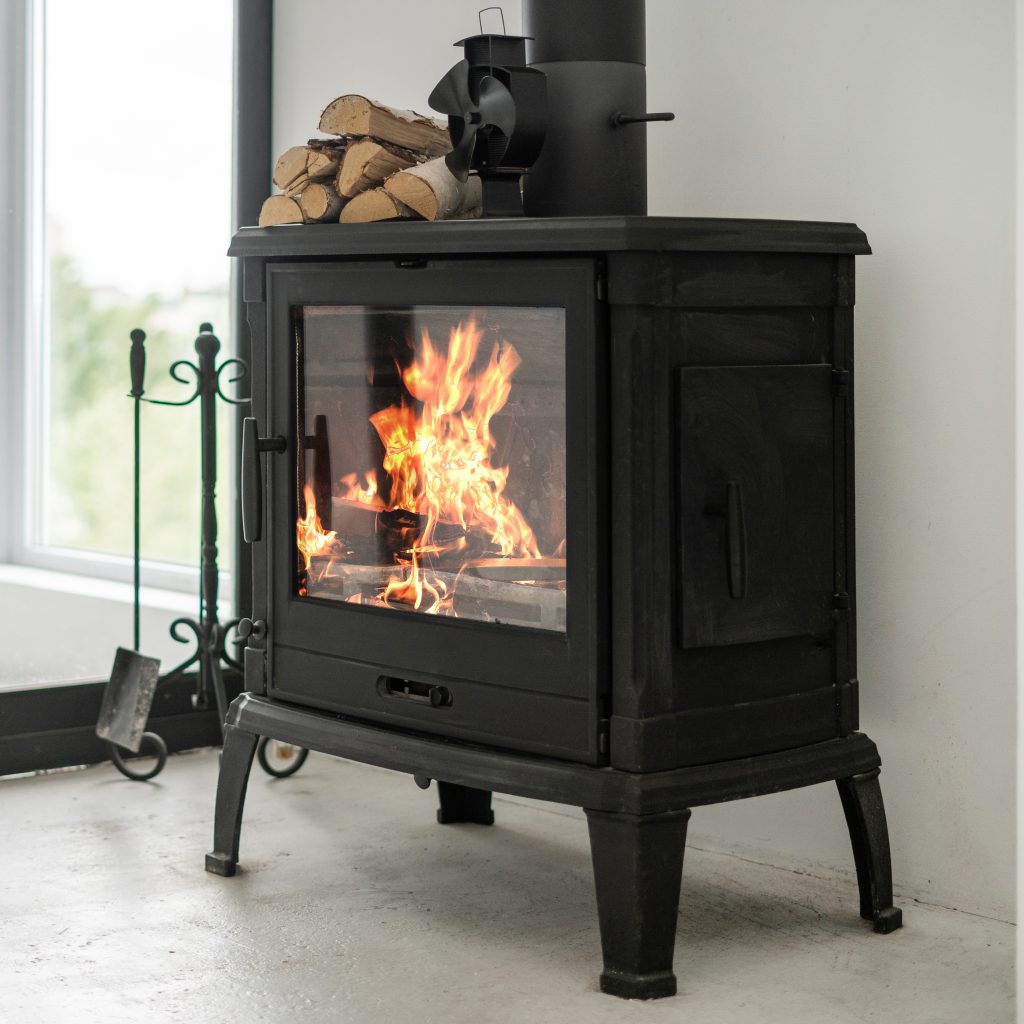
Free-Standing Convection Heaters
Free-standing convection heaters use air cavities around the outside of the firebox and then a decorative outer casing. Heat is distributed by air currents, with cooler air drawn in to rise between the firebox and the outer casing, keeping the outside of the unit relatively cool.
Convection heaters transfer about two-thirds of their heat output by convection and about one-third by radiation.
Convection wood heaters generally provide reasonably even heat throughout a room. Because their exterior surfaces are lower in temperature than radiant models, they are less likely to cause burns from direct contact. It is recommended to have a fireguard to help prevent someone from touching the surface.
Some convection heaters are fan forced to help heat larger homes.
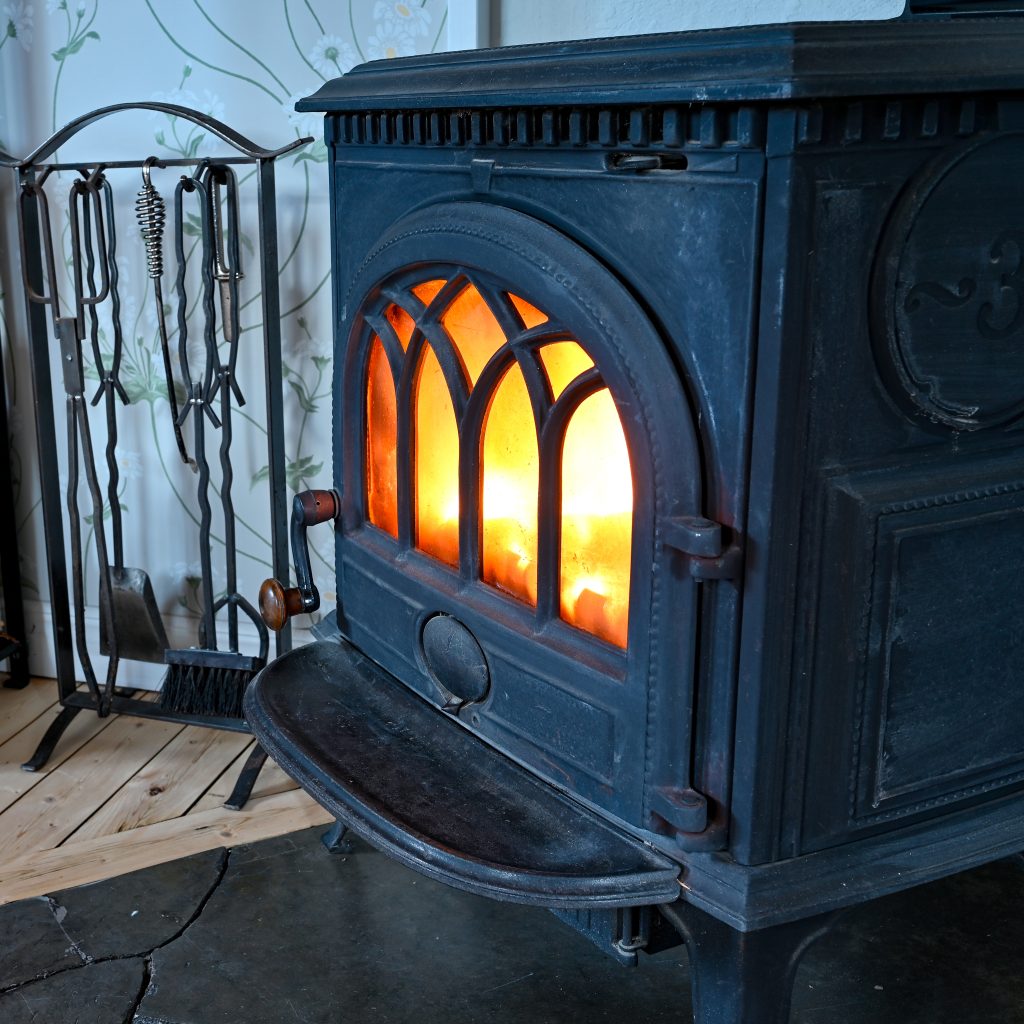
Free-Standing Radiant Heaters
Free-standing radiant heaters transfer about two-thirds of their heat output by radiation and about one-third by convection. The surface of the heater reaches very hot temperatures, which radiates the heat out in all directions. Objects such as walls, floors, ceilings, furniture, and people that face the wood heater, are warmed directly by the radiated heat.
Radiant wood heaters warm quickly; you can feel the heat when you sit close, but the room takes longer to warm.
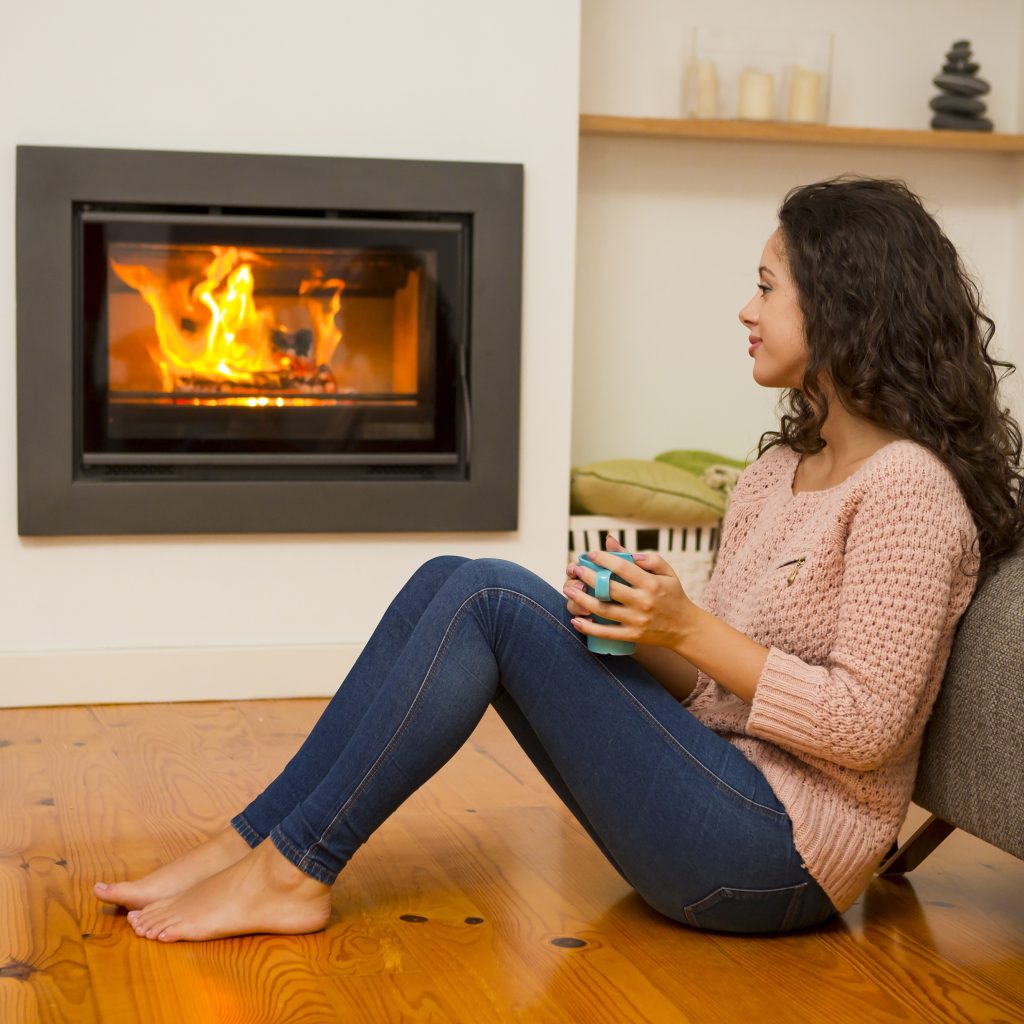
Inbuilt Heaters
Inbuilt heaters are designed to be in contact with or built into a heat-resistant structure.

Pellet Heaters
Pellet heaters burn compressed wood or biomass pellets to create a heat source for residential and sometimes industrial spaces.
Slowly feeding fuel from a storage container (hopper) into a burn-pot area creates a constant flame that requires little to no physical adjustments.
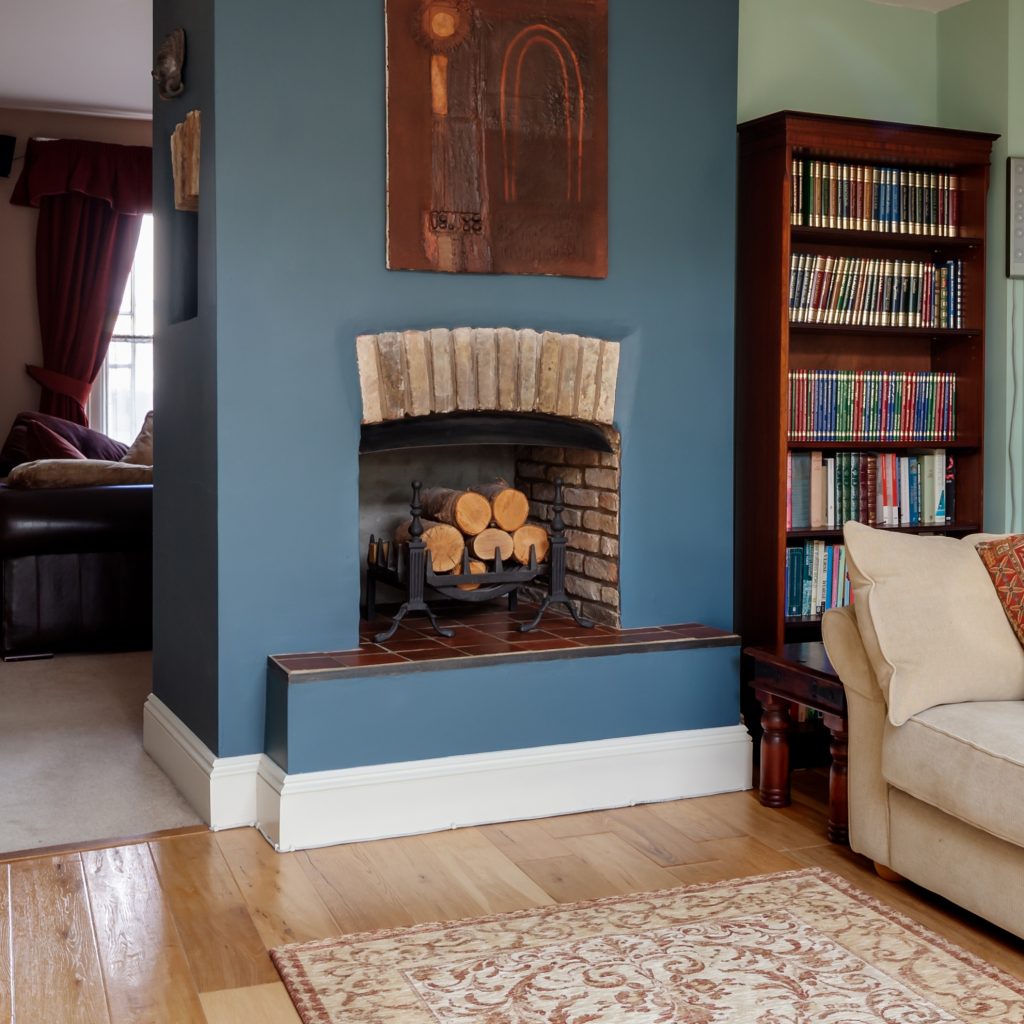
Open Fireplace
Some prefer the more nostalgic brick open fireplace or cast iron stoves. The one thing they all have in common is they all burn wood to generate heat and have a chimney to let smoke escape.
The choice is yours!
This diagram of how a typical free-standing heater works.
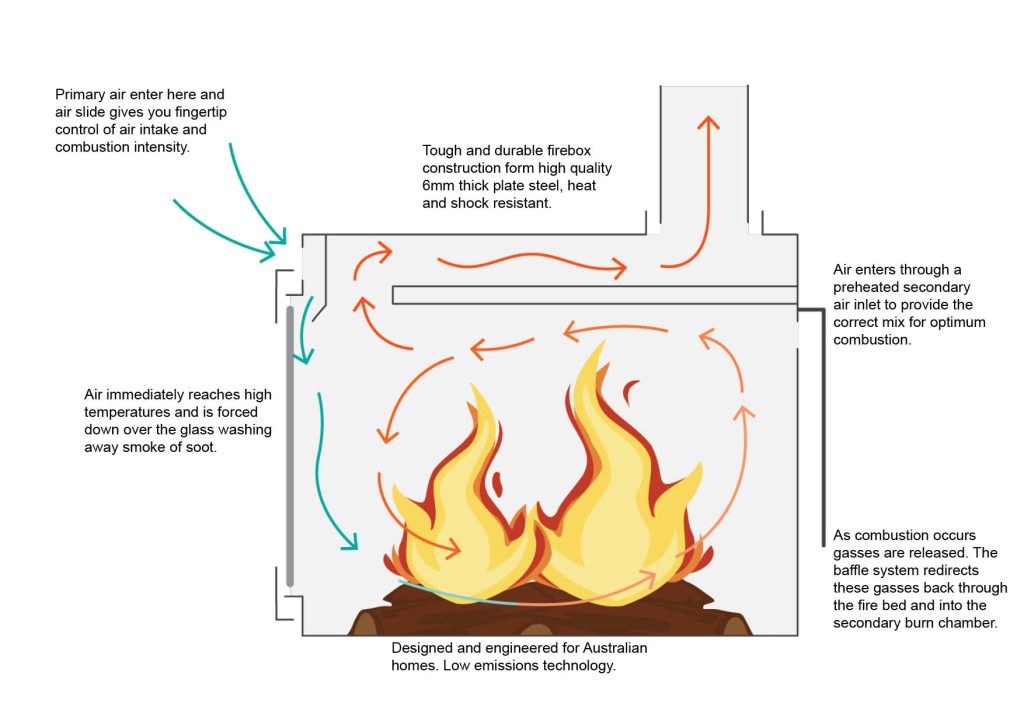
Pros and Cons of Having a Fireplace
When deciding to own a fireplace, consider a few things.
Pros
- Fireplaces are a practical alternative for heating homes
- They can save energy and money
- Wood is cheap
- The peaceful effect a fire has when you watch the flames
- Fireplaces can be decorative or be the main feature of a room
Cons
- Fires can be dangerous
- Can be expensive to install
- Space to store wood and keep it dry
- Room to install a fireplace
- Maintenance
What is Creosote?
Creosote consists mainly of tar. It is a dangerous byproduct of burning wood that coats chimneys, flues, and glass. You get more creosote from burning artificial, green, or damp wood. Unfortunately, creosote is corrosive and highly flammable. When it is in the chimney or flue, it is combined with unburnt wood particles and soot, making it dangerous if not removed.
What is a Chimney fire?
A chimney fire is when residue deposits like creosote catch alight and burn inside the chimney, flue, stove pipes, etc. These can be either slow or fast burns. Both are very dangerous, and routine maintenance can help avoid this potentially lethal situation. Clean chimneys don’t catch alight.
FAST BURN:
You may hear loud popping noises or a low rumbling sound, almost like a low-flying aeroplane. You may smell an intense, hot smell. Large black smoke clouds and sparks may come out of your chimney top outside. If you are burning clean, dry wood you should not have large black clouds of smoke pouring out of your chimney top.
SLOW BURN:
These are harder to detect, as they don’t get enough air or don’t have enough fuel to be easily visible.
Both are dangerous:
- Chimney fires can spread to the rest of the home
- Blocked chimneys can cause fumes and smoke to build up inside the home, potentially causing suffocation
- Chimney fires can damage the fireplace and chimney, requiring major repairs
Read more from CSIA explaining The Facts About Chimney Fires and watch this short video Avoiding Chimney Fires in Your Home.
What Can You Look Out For?
The biggest concern is that chimney fires can occur without anyone knowing. Prevention by doing routine maintenance cleans is vital to having peace of mind.
Some signs to look for:
- Soot and creosote sometimes fall into your fireplace.
- You burn damp or inadequately dried wood, that takes a long time to burn, or doesn’t burn completely. Wood usually needs six months of seasoning (drying) to expel enough moisture to burn properly.
- Thick and puffy or honeycombed creosote is present inside the flue.
- Smoke accumulates in the house.
- You need to keep the damper semi-open to slow the fire and keep it burning longer.
- You burn a lot of artificial logs.
Watch this helpful video on HOW TO KNOW IF YOUR CHIMNEY NEEDS A CLEAN
Other things to watch for:
- Cracks in cast iron and bricks
- Fumes entering the home
- Dirty glass
Firewood FAQs
- How can I tell if the wood is dry enough to burn?
Wood needs less than 25% moisture, preferably between 12% and 20%. In very dry climates, 12% is as low as wood moisture content will get. The drier the wood less creosote is created. - Are old railway sleepers safe to burn? No! Many contain nasty oils, herbicides, and heavy metals to make them last longer.
- What is the best firewood? In Western Australia, Jarrah, and Wandoo. In Tasmania, Brown Peppermint. In South Australia, Victoria, and southern NSW, River Red Gum is considered the best. In Queensland, Ironbark and Box are preferred. Some are better for slow-combustion heaters as they don’t burn with a lot of flames.
How Do I Maintain My Fireplace, Keeping My Family and Me Safe?
It is recommended, and some insurance companies require you to have your chimney and fireplace professionally cleaned at least once a year. The best time is in spring after you have finished using the fireplace. This will remove any build-up before the creosote hardens, making it more difficult to remove later. It also gives you peace of mind that your fireplace is ready to use when autumn returns.
General Maintenance Tips
Here is some general maintenance you can do to help reduce these risks and keep your wood heater in tip-top condition.
- CLEAN CHIMNEY AND FLUE
Use a chimney & flue cleaner like Firewise Soot-Loose Chimney & Flue Cleaner to remove built-up creosote, soot, and tar, which can cause blockages and dangerous chimney fires. These are very easy to use and don’t require a professional. - CLEAN FIREPLACE GLASS
Clean fireplace glass with a cleaner formulated for glass that gets hot. Firewise Crystal Clear Fireplace Glass Cleaner removes stubborn tar and creosote from fireplace glass, leaving a protective coating that makes future cleaning easier. - REPAIR CRACKS AND HOLES
Repair any cracks and seals as soon as they appear. Firewise Black Patch Stove Putty ensures you have a smoke-tight seal if you have a steel or cast iron fireplace. - REPAIR BRICKS
If you have loose or broken bricks, products like Firewise Hot Spot Ready to Use Mortar are designed to help you repair or lay firebricks. - REPLACE BRICKS
If you have a broken brick that is not repairable, then Firewise Instant Brick Castable Cement is perfect, as you can cast it into the shape you need to replace the brick or use it to line a pot belly stove. - RUST PREVENTION
Rust! Unfortunately, steel and cast iron are prone to rust when heated to high temperatures. The metal expands and contracts to trap moisture on its surface. Some fireplaces are painted with heat-resistant paint, while some cast iron stoves are polished, giving them a lovely satin black finish. Firewise Black Beauty Cast Iron Stove Polish and Firewise New Coat High Temp Paint are perfect for restoring your fireplace or wood stove to its new look.
Summary
Fireplaces are a great way to heat your home, and it is lovely to watch the flames flicker around, but routine maintenance is essential to keep you and your family safe.
More Handy Information About Fireplaces and Firewood
- CSIRO FIREPLACES IN AUSTRALIA AND HOW MUCH FIREWOOD IS CONSUMED STUDY
https://near.csiro.au/public/assets/3da883f7-8dea-4eab-9025-1dddd3a38e2b/D11_1_4.pdf - CSIRO GREENHOUSE STUDY
https://www.firewood.asn.au/resources/articles/article/3/csiro-greenhouse-study-says-firewood-is-best.html - LIFE ON THE 49TH – HOW TO KNOW IF YOU NEED A CHIMNEY CLEAN
https://www.youtube.com/watch?v=q7lnXvPQjOc - LIFE ON THE 49TH – HOW TO BURN A WOOD STOVE PROPERLY https://www.youtube.com/watch?v=9tW4Xltx3Bc
- FAQS FROM FIREWOOD ASSOCIATION OF AUSTRALIA INC.
https://www.firewood.asn.au/faqs.html - CSIA THE FACTS ABOUT CHIMNEY FIRES
https://www.csia.org/homeowner-resources/the-facts-about-chimney-fires-your-questions-answered/ - CSIA AVOIDING CHIMNEY FIRES IN YOUR HOME
https://www.youtube.com/watch?v=Y16K2CM3QdI&t=77s - AUSTRALIAN HOME HEATING TYPES OF WOOD HEATERS
https://www.homeheat.com.au/wood-heaters/types-of-wood-heaters/ - THE NATURAL HANDYMAN CHIMNEY FIRES, CAUSES AND CURES
https://www.naturalhandyman.com/iip/infchimneyfire/infchimneyfire.html
